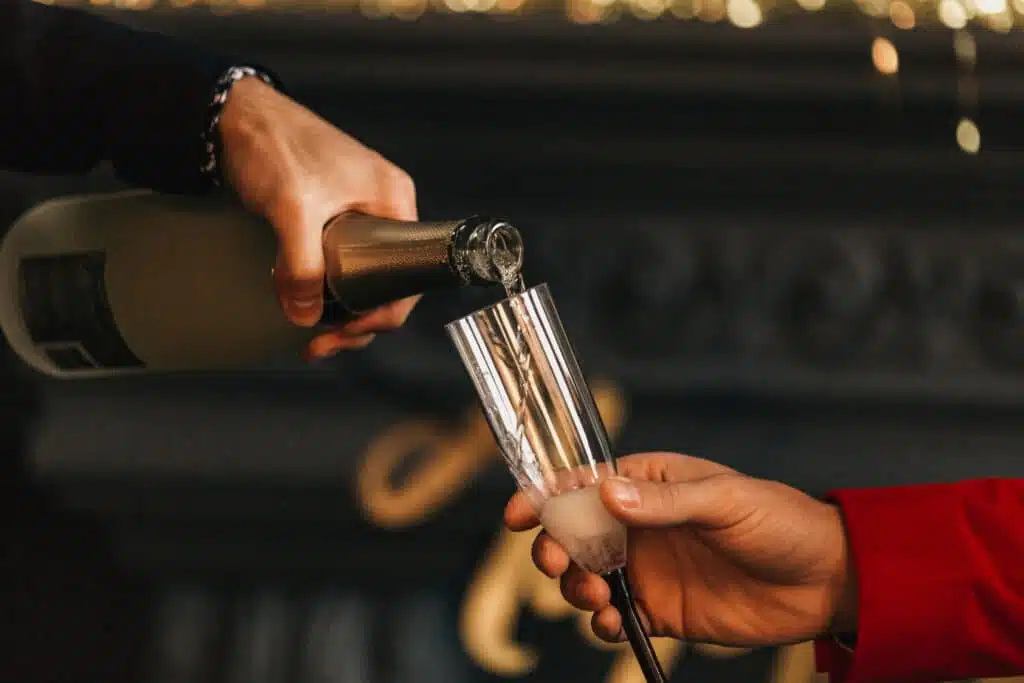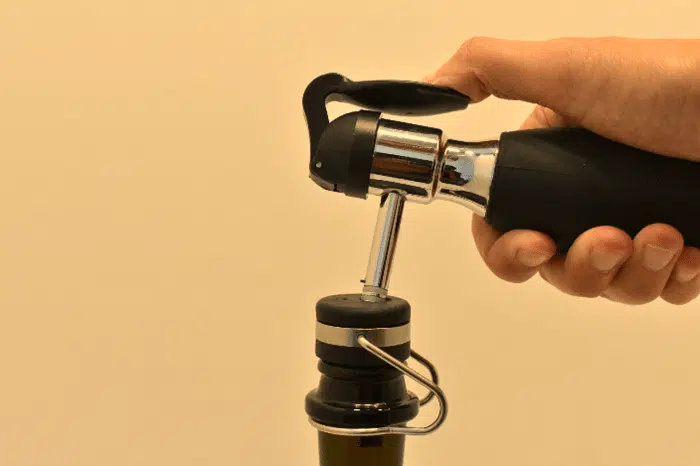Defining effervescence?
Effervescence refers to the production of bubbles or foam by a substance, particularly when mixed with a liquid. It’s most often associated with soft drinks, where bubbles are created by the release of carbon dioxide.
The word can also be used to describe a cheerful, bubbly personality, or a state of excitement or exuberance. In chemistry, effervescence refers to the reaction that occurs when a carbon dioxide-producing substance reacts with an acid to produce carbon dioxide (CO2) bubbles.
Effervescence can therefore take many forms.
What is a sparkling wine?
An effervescent wine is therefore by definition a wine that contains air bubbles, created by the presence of dissolved carbon dioxide.
It can be produced in a variety of ways, but the most common method is the méthode champenoise, which involves fermenting the wine a second time in the bottle to create carbon dioxide.
Sparkling wines include champagne, prosecco and cava, among others. They are often consumed at celebrations and special occasions because of their sparkling taste and frothy texture.
Where does the effervescence in Champagne come from?
The méthode champenoise is a sparkling wine production method developed in the Champagne region of France.
It involves fermenting the wine a second time in the bottle to create carbon dioxide, which gives the wine its characteristic bubbles. Here are the general stages of the méthode champenoise:
- Primary fermentation: The grape juice ferments for the first time in the presence of yeast, producing wine and carbon dioxide.
- Tirage: The wine is bottled with sugar and yeast, triggering a second fermentation in the bottle.
- Regeneration: The yeast consumes the sugar and produces carbon dioxide, which dissolves in the wine.
- Capping: The bottles are corked to prevent the gas from escaping.
- Storage: Bottles are stored on their sides for several months to several years to allow the deposit to form.
- Stirring: Cylinders are stirred regularly to dislodge the deposit.
- Disgorging: The cork is removed, releasing the deposit and allowing excess carbon dioxide to escape.
- Bottling: The wine is re-bottled and released for sale.
The méthode champenoise is considered to be one of the most complex and expensive methods of producing sparkling wines, but it is also considered to be the most upmarket, producing high-quality wines with fine bubbles and a frothy texture.
How to preserve Champagne bubbles?
To preserve Champagne bubbles, it’s important to follow these steps:
- Store at the right temperature: Store champagne at a constant temperature of 7 to 10 degrees Celsius. Too high a temperature can cause carbon dioxide to escape more quickly, reducing the amount of bubbles.
- Horizontal storage: Store champagne bottles horizontally to prevent the cork from drying out and letting air in.
- Avoid vibration: Avoid shaking champagne bottles or storing them near sources of vibration such as machinery or household appliances.
- Tight closure: Keep champagne bottles tightly closed and be careful not to leave them open for long periods.
- Quick service: When serving champagne, serve it quickly after opening to prevent the bubbles from escaping.
By following these steps, you can preserve your champagne’s bubbles for an extended period and maintain its freshness and effervescence.
Effervescence definition – Note that bubbles will naturally fade over time, even when champagne is well preserved.
Also of interest to wine professionals are the sparkling wine preservation systems that have just appeared in the 2020s.
BUBBL. This system from Wikeeps perfectly preserves an open bottle of sparkling wine for 7 days.
Thanks to the addition of CO2 and N2 (nitrogen) via a gun containing a cartridge, the bubbles and aromas will remain intact… allowing you to enjoy a glass day after day.


